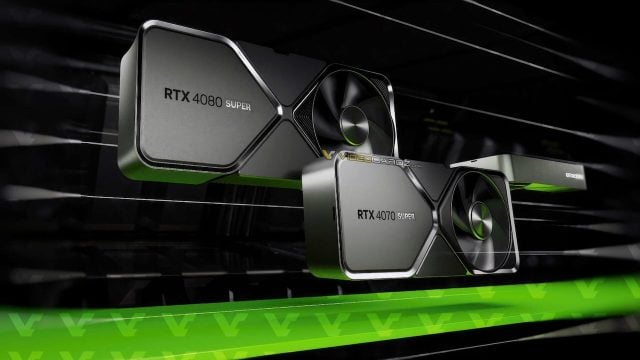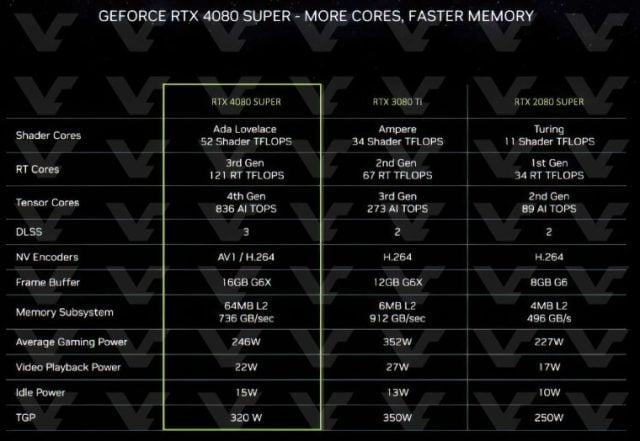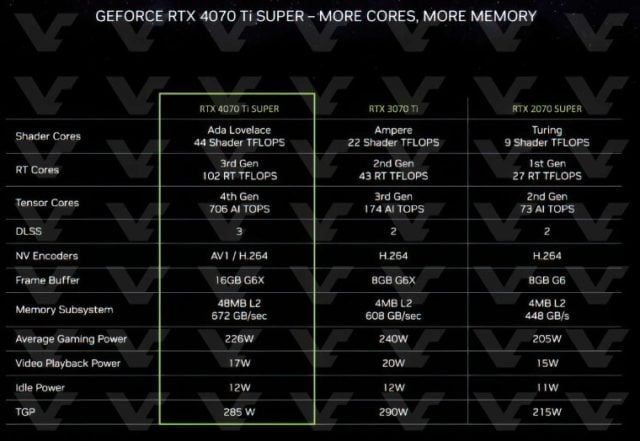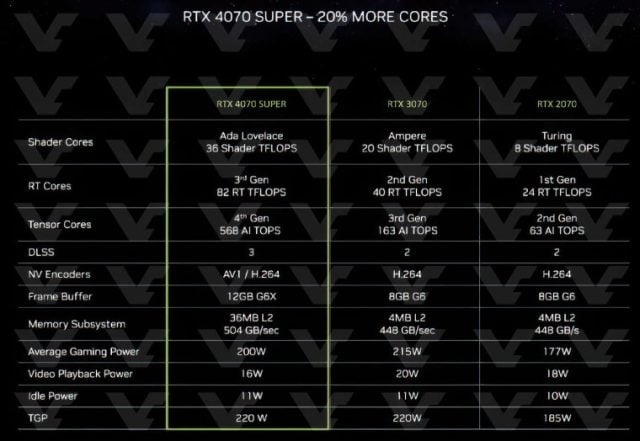
RTX 40 Super Series GPUs were officially introduced by NVIDIA during the CES 2024 event. Here are all the details about NVIDIA RTX 40 Super Series features and prices.
NVIDIA RTX 40 Super Series Features
NVIDIA has made a refresh for the GeForce RTX 40 series “Ada” with the new GeForce RTX 4070 SUPER, GeForce RTX 4070 Ti SUPER and GeForce RTX 4080 SUPER models. The new RTX 4080 SUPER replaces the current RTX 4080, which will be phased out. The new RTX 4070 Ti SUPER functions the same as the existing RTX 4070 Ti. However, RTX 4070 SUPER will coexist with the existing RTX 4070, albeit with a slight price advantage. While RTX 4070 SUPER and RTX 4070 Ti SUPER are recommended by NVIDIA for maximum 1440p gaming with full ray tracing; The RTX 4080 SUPER is for those who want maximum gaming at 4K with full ray tracing. The RTX 4070 SUPER and RTX 4070 Ti SUPER promise the capacity to deliver 4K gaming and more than acceptable frame rates, especially considering the latest DLSS 3 Frame Generation and its proliferation among new AAA games.

The new GeForce RTX 4070 SUPER is made of the same 5 nm “AD104” silicon as the RTX 4070 and RTX 4070 Ti. “AD104” physically has 60 SMs (streaming multiprocessors). On the original RTX 4070, this number was only 46, and the RTX 4070 Ti was able to use all 60. The new RTX 4070 SUPER released today has 56 SMs, which gives it 7,168 CUDA cores, 224 Tensor cores, 56 RT cores, 224 TMUs and all 80 ROPs available in silicon. The memory subsystem remains unchanged with the RTX 4070-12 GB 21 Gbps GDDR6X memory and 192-bit memory bus.

Considering that NVIDIA maxed out the “AD104” to create the RTX 4070 Ti, it turned to the larger “AD103” silicon to reveal the RTX 4070 Ti SUPER, receiving the biggest spec upgrade in this refresh. The RTX 4070 Ti SUPER comes with 16GB of 21Gbps GDDR6X memory on the wider 256-bit memory bus of the “AD103”. The number of SMs increased by 10%, from 80 to 66 in “AD103”. This provides 8,448 CUDA cores, 264 Tensor cores, 66 RT cores, 264 TMUs and 112 ROPs. 21 Gbps GDDR6X memory on a 256-bit memory bus provides a healthy 716 GB/s memory bandwidth.

NVIDIA had nearly maxed out the “AD103” to create the original RTX 4080, but resisted using the larger “AD102” for the RTX 4080 SUPER. He thinks “AD103” has what it takes to deliver a faster product. RTX 4080 SUPER maximizes silicon by enabling all 80 SMs for 10,240 CUDA cores, 320 Tensor cores, 80 RT cores, 320 TMUs, and 112 ROPs. While the original RTX 4080 has a memory speed of 22.4 Gbps, NVIDIA increases this to 23 Gbps in the RTX 4080 SUPER, providing 736 GB / s bandwidth.
GPU base and boost frequencies are almost the same between the RTX 4070 and RTX 4070 SUPER. There is a 100 MHz increase in both values between RTX 4080 and RTX 4080 SUPER.
In terms of TGP (total graphics power), the RTX 4070 SUPER reaches 220W, an increase of 10%. This means you no longer have custom-designed cards with single 8-pin PCIe power connectors. They all have 12VHPWR and include an NVIDIA-designed adapter that converts two 8-pin PCIe into a 12VHPWR capable of delivering 300W continuously. The TGP of the RTX 4070 Ti SUPER remains at 285W, while that of the RTX 4080 SUPER remains at 320W.
NVIDIA RTX 40 Super Series Prices
NVIDIA is introducing three new graphics cards in a staggered launch spanning January 2024. The RTX 4070 SUPER will be available for purchase on January 17 for the RTX 4070’s original recommended retail price of $599. After this launch, the RTX 4070 will drop to $549. The price of the RTX 4070 Ti SUPER, which will be available on January 24, is set at $ 799, and it is removed from the existing RTX 4070 Ti product group. The remaining RTX 4070 Ti cards will be available at slightly discounted prices.
The new RTX 4080 SUPER is the most interesting of the three cards in terms of pricing. The graphics card will be priced at $999, which is $200 less than the launch price of the original RTX 4080 when it goes on sale on January 31.
Follow our site to read more technology news!









